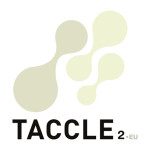Overview
Learners will have already begun to investigate how humans rely on other organisms for survival. Here, they will begin to apply this knowledge and understanding to life in other countries with different levels of economic development.
Description
As quick warm up, invite one learner to come to the front of the class to build a house of cards! These can be cards with pictures of various animals on them, or a regular pack of cards with the names/pictures of organisms on the back. The cards do need to be fairly sturdy and uniform in size. When they’ve built their ‘house’, invite another pupil to remove one of the cards. Continue to do this until the ‘house’ as completely collapsed.
Ask learners what this rough analogy tells us about the inter-dependence of organisms.
Show learners a clip on www.africam.com you can choose any one you may think appropriate. It’s always worth checking out the live cams, but often there’s not much going on so you may need to select one from the archive. Click on the Live Safari Cam tab, scroll to the bottom and select a video from the archive. There will be a good selection but a particular favourite of ours is ‘Warthog Family Searching for Food’! But this particular video may not be available permanently. Play your selected video for learners. If you’d rather not play the adverts (I guess the website has to make money somehow!) click the tab ‘Stop Ads’.
Having watched the video, tell learners to list as many ‘important things’ as they can think of about that creature. In the case of the warthog, this could range from ‘Food for people’ to ‘Its manure fertilizes the earth.’ Allow learners to share ideas.
From this point onwards, you will ask learners to work in small groups in order to create a prognosis report on one organism in particular. You can either provide a list (allow learners to choose out of a hat) or learners can choose their own. The only condition being is that it must be a country with a lower level of economic development. The prognosis report will be for the government of that country and should include:
- relevant and current data about that animal e.g. rise/fall in population levels, current population levels, preferred habitat, their spread across the country etc
- interdependence – to include (where appropriate) food webs, pyramids of number, energy flow charts etc
- how any of the above are affected by human/environmental factors.
- value of wildlife (in general) to the economy of that country and details of ways in which people may depend on the creature e.g. for food, clothing etc
- how the extinction of that particular organism would affect that country’s ecological ‘house of cards’.
- any global consequences due to their findings e.g. microscopic bacteria in the intestines of termites are critical to the continuity of life on earth… allegedly.
The final report will need to be in two parts: text and video. The text may be in the form of a blog www.glogster.com a webpage www.wordpress.org or a pdf file uploaded onto any available webpage e.g. the school’s. The video could be in the genre of a news report, footage of the organism with learners providing the commentary. Both will have to be ‘submitted’ by being uploaded to the internet.
How learners choose to do this will be largely down to their previous experiences, personal strengths and preferences and what they deem to be most suitable for a report of this nature. Remind learners regularly about WHAT the report must include and WHO it is for!
What do I need?
Internet access.
Video cameras/phones
pack of ‘animal cards’ see example here : http://www.artistsupplysource.com/product.php?productid=62973
notebooks
Added value
This activity gives learners the opportunity to investigate and understand global issues in another locality – this is usually part of the science, geography and PHSE curriculum so it’s possible to work across traditional subject areas and develop many competences simultaneously.
Hints and tips
Using video editing software: If you do not already have Windows Moviemaker on your computer, you will need to download it from the web (use the link below). The download is usually free. iMovie is very similar if you’d prefer to use that.
When you’re all set and ready to go, ask learners to open the program. The screen will be largely blank, with a small black screen on the top right-hand of the screen (this is where their movie will be played). The business end of the operation is on the top left hand; it includes the usual tabs like ‘file’, ‘edit’, ‘view’ etc. Running down the side will be technical gizmos such as ‘import’, ‘edit’ and ‘publish to’. Along the bottom will be the ‘Storyboard’.
Learners will already have footage they’ll want to use. This can be several short clips or one continuous piece of footage to make up their report.
The trickiest bit (which isn’t that tricky really) is importing the footage. You will have your footage in one of four places, and these are as is noted on the links on the left: ‘from digital video camera’ (this includes phones), the ‘video’ file on your computer, the ‘pictures’ file on your computer or in the ‘audio or music’ file on your computer.
Click on the relevant link and locate the footage you want to use. Double right click on the footage and hey-presto, in seconds, the footage should now appear on the main Windows Moviemaker screen.
Drag the video clip(s) you’d like to use, one to each blank square on the storyboard. If you click the play button beneath the screen in the right-hand corner, your clips should play. This is easy if you’re only using one clip. For multiple clips, drag one to each blank square on the ‘Storyboard’. The basic movie is now pretty much complete!
To add give the movie a real film flavour, learners will need to click on the ‘Titles and credits’ link on the left. We suggest only experimenting with ‘Title at the beginning’ and ‘Credits at the end’ until learners are more familiar with the software and processes.
Click on ‘Title at the beginning’ and in the first box ask pupils to type in the film title. In the box below they can type their name(s). To finish, they must click on ‘Add title’.
Back on the main screen, ask learners to click on ‘Titles and credits’ again and then click ‘Credits at the end’. Here they can type their name(s), role(s) etc.
Again, ask learners to press the play button to see their movie in its entirety and to decide if they’re happy with their work.
Safety
If pupils appear in the video to be uploaded, ensure you have parental consent.





 English
English Nederlands
Nederlands Deutsch
Deutsch Italiano
Italiano Español
Español Português
Português Română
Română Cymraeg
Cymraeg
No comments yet.